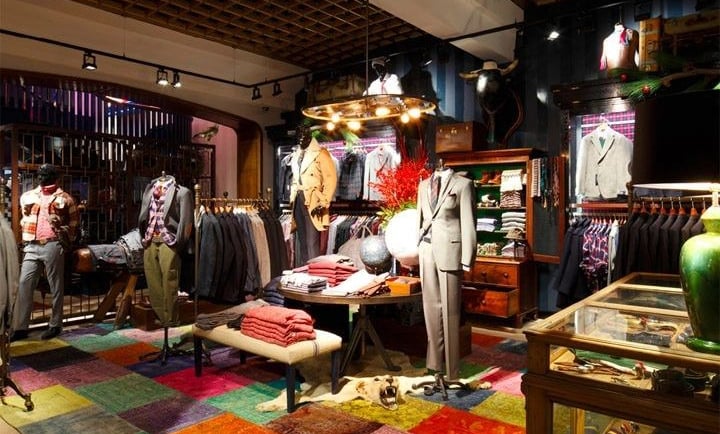Fashion Marketing - Case Study
Branding All'Americana.
ilker bayar
9/14/20216 min read


Branding All'Americana
In my previous blog post I promised to write about Brooks Brothers which recently filed for bankruptcy. But to make it more meaningful, I made some comparisons with another American brand that I worked with: Tommy Hilfiger and its fashion marketing strategy. The writing has become a fashion marketing case study rather than a blog entry which is full of lessons for companies.
Tommy Hilfiger brand has been around for a long time, though not as long as Brooks Brothers. Both brands have been through a lot throughout their history but recently BB filed for chapter 11 bankruptcy in the US while Tommy Hilfiger, a much younger brand keeps thriving. Let’s delve into why.
There are few American brands that are associated with the country’s culture. Having worked with two of these brands, I would like to compare them to see how one thrived while the other failed and what companies can learn from this.
TOMMY LEGACY
Tommy Hilfiger started his career very early as an entrepreneur by buying jeans, remodeling and reselling them under the brand called “People’s Place”. Being an American designer, he always had a passion for the American image, which made him one of the most famous and successful American designers in the world.
But things haven’t always been smooth for Tommy Hilfiger. He faced many challenges and bankrupted a couple of times but he never yielded and went back in the game again and again.
He created his fashion empire bearing his name in 1985. He coined his brand around “all American and preppy” concept. Company’s retail sales quickly reached to $70 million in 1987 and in 1992 it went public. Throughout the '90s, the brand was somewhat popular among celebrities and media. In the early 2000’s, his venture was financially troubled due to lack of interest from customers. That is when Apax Partners acquired it for $1.6 billion, only to sell it to Phillips-Van Heusen Corporation (PVH) for $3 billion after four years.
Following the acquisition in 2010, PVH began capitalising on TH brand in Europe. After a successful rebranding, TH repositioned itself as a successful American brand. TH represented a huge part of PVH's operating profit. Today, Tommy Hilfiger brand (TH) has an extensive distribution network in more than 100 countries and more than 2,000 retail stores throughout North America, Europe, Latin America and the Asia Pacific region. The brand also has Tommy Hilfiger Denim, TH Kids, and Tailored offering products for different customer needs.
Since I worked with TH teams across Europe and Middle East, I can, without a doubt, say that the company pays massive attention to specific market needs, consumer expectations and preferences. When I travelled to America, I noticed how store designs and merchandise are different, taking customer profile differences into account. TH offers those European products in few select locations in US and uses new shop concepts in again specific locations. For the rest of the American market, the company has different marketing efforts and creative direction. However, TH brand DNA revolves around “classic American cool, with a twist”. The part with a twist is the keyword here. That can be clearly observed in TH marketing in Europe, Middle East and other non-US markets
Tommy's Secret Sauce
TH celebrates its American heritage but supports this main concept with pop culture elements, funny messages, cool designs in clothes, highly creative shop designs, sparkling marketing and social media campaigns. This is the secret sauce to TH’s success; connecting with the global audience in the most powerful way and asserting a strong position in the market that distinguishes the brand from other “American” brands.
For TH, Europe (North) and Middle East are exciting markets where the company has seen incredible growth under the PVH. When I used to work with the brand, I used to travel to Amsterdam where TH has its European HQ. That is where you can witness the magic happening. Every 6 months, all the visual merchandisers, buyers and managers from European and Middle Eastern markets gather in the showrooms to see the next collections, learn about the trends and learn what’s new with the company, join the workshops to create and to have fun playing games, have meetings to talk about sales and strategies, etc. It’s a super fun and creative environment where being part of TH (PVH) family is celebrated and communicated. This is how TH created an inclusive culture that makes employees an ambassador in the first place. When you work with those teams, you can understand how TH focuses on building an experience in its stores and a culture of its own that differentiates the brand.
An example of how TH brings the experience to the customers, below you can see an image of an entire beach cottage travelling around the world.
The American inspired exhibiting store was selling a limited edition “Prep World” collection for just one week in cities like LA, New York, London, Paris, Milan, Tokyo, etc.
TH marketing and creative teams were finding numerous ways to showcase brand image and style through shops, campaigns, capsule collections, PR and events. I was involved in such projects countless times.
BROOKS BROTHERS
Founded in 1818, Brooks Brothers (BB) is literally a pioneer in American fashion. The founder, Henry Sand Brooks had a very sound promise; “To make and deal only in merchandise of the finest body, to sell at a fair price, and to deal with people who seek and appreciate such merchandise”. BB had dressed 41 of 45 American presidents, survived the Civil War, the Great Depression and two World Wars. BB has an extensive heritage and therefore a huge potential as a value creator for the consumers
The company is famous for inventing styles that are associated with American clothing such as preppy concept and revolutionised garment manufacturing when it debuted in 1849. BB is known for introducing ready-to-wear suit, Madras fabric (from India), Argyle socks, light-weight suits, oxford-cloth, button-down and non-iron shirts, polo coat and much more to America and to fashion world. You can find more information here.
As a trademark of classic American menswear, customers turned to Brooks Brothers for its iconic suits and shirts. In 1940’s nearly every American man wore a suit for work and quite many of men bought theirs from BB. However, since the 70s, trends started to change as less and less people were interested in tailored clothing and suits. As BB lost customer interest, it tried to follow the trends instead of innovating to keep it relevant for the consumers or finding new niches in the market.
After Brooks Brothers was acquired by Claudio del Vecchio in 2001, the company had gone through some changes. BB worked with famous designer Thom Browne to introduce the high-end Black Fleece line in 2007. A casual Red Fleece line was introduced in 2013 and legendary American designer Zac Posen was designing BB womenswear. CEO del Vecchio was optimistic and had declared “I am here to reinforce a culture. I have to make sure that we are building a company that will last after me. I don’t want to be here another 20 years. Forget about another 200 years. It’s really about trying to build a culture that will last longer than the business. That will make it very hard for the next guy to screw it up.”
So what “screwed up” BB?
Having worked with both of the brands, when I compare it to Tommy Hilfiger, I can say that Brooks Brothers is much more superior in quality. BB is using fabrics like Supima Cotton, Merino wool and innovative engineering in manufacturing.
As a customer, I would rather pay BB a little higher amount and get something of a higher quality rather than paying higher amount for TH products (which are really overpriced) with lower quality. But what the BB brand lacked is a creative way to put it out there and communicate this quality to the customers.
Unlike Tommy Hilfiger which focused heavily on franchising, BB kept its operations small but always opened stores in top locations which increased the costs but not necessarily the profits. The company was engaged in long-term leases that cost a lot and were paid by the company even though so many of them were unprofitable stores as stated by former management in the press.
Tommy Hilfiger and Brooks Brothers compared; a final word.
Although BB's cult followers were upset about switching from “American Made” to Italian stuff, I think the after the Italian touch, the brand had another potential marketing point but to different customers in different markets.
What TH did was to change the image and reposition itself in other markets. If you talk to American consumers, most of them will say TH is an average brand. Whereas customer perception for TH in Europe and Middle East is quite different, and would even be described as high-end by most.
BB marketing decisions were managed by the American marketing teams. The message was not adapted to local teams and there was very limited access to images and marketing materials which affected teams using images in social media and in stores (due to copyrights issues). The language in PR and marketing was plain, images were poor and most of the time quite basic and dare I say, dull.
Whereas Tommy Hilfiger endorsed celebrities like Gigi Hadid, Zendaya, Lewis Hamilton, worked with famous models, the campaign images are always highly creative, fun and relevant to the brand DNA; “All American preppy, with a twist.”
BB messages, imagery and campaigns were weak and not entertaining enough to attract attention, esp. from younger generations.
To sum it all up, having great heritage, magnificent products, better quality are not enough alone. Brands need to position themselves correctly, connect with the right customers and communicate the message with the use of creativity and marketing.
Do you need help with your marketing ? Just click right here
Consultancy
Expertise in fashion and luxury branding.
Training
Agency
hello@branda.website
+447861276382
© 2025. All rights reserved.
